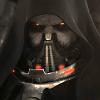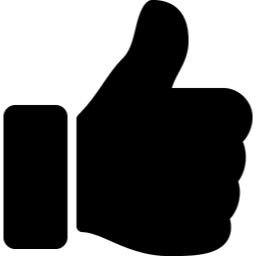-
Posts
790 -
Joined
-
Last visited
Content Type
News Articles
Tutorials
Forums
Downloads
Everything posted by Psyk0Sith
-
Yes referring to the sculpt, sorry!. I use a mix of clay tubes with round alpha (more subtle than buildup), dam standard, mahcut mech b with square alpha and smooth brush. Pinch when needed, planar when needed and of course move. The standard brush i only use when i want to achieve a certain look...like inflating / rounding something that is already there. Not sure if you are using a tablet but it also helps...fading forms into each other if you will.
-
Tip: Don't be afraid to create really blocky forms, almost as if you were modeling hard surface. Establish a hard structure behind anatomy or it will come out blobby. It does require practice but there's no other way to do it.
-
Yes, already mentioned, the support for different engines is the main interest, it wasn't a baking tool like xnormal in previous dev state. Is that the matcap you use to sculpt on? Because it's a terrible matcap, even for showcasing. Try some of these instead (or the stock ones that look more like clay): http://www.mediafire.com/?fsbeuid0hbc5778 http://www.mediafire.com/?jd1nnw5rr8mrz1o
-
That's good to know, i haven't updated xnormal in a while so i was not aware (and do most of my baking in max)...does it support unity, unreal, maya, max, source, input tangent? etc.
-
Some guidelines when baking... -Before you bake always check the mesh for errors such as open edges, double faces and "rat nests" -When you are happy with the final look of the low poly, triangulate the mesh before exporting / baking (keep a backup of course or use non destructive modifiers) -Padding should always be a crazy high number, something like 64 should be enough, bump number up as the texture res goes higher. -Keep in mind that the state your mesh is baked in (either 1 smoothing group or assigned smoothing group) needs to be kept at all times within the pipeline, if not it will create a mismatch between the tangent map and the altered model. *Note: this issue can be resolved with handplane: let's say you bake your model and it looks fine but you decide to use rend2 and start splitting your model for dismemberment, you'll get nasty seam lines, the same goes for changing edge orientation and adding loops (well most of the time). The workaround for this is to bake a world space map first and then feed it to handplane along with your modified mesh, handplane will outpout a correct tangent map. -If you bake your mesh in zbrush and display in another software there's a chance you'll run into a sync issue...it simply means different software calculate and display normal maps differently, the solution is to stick with bakers & renderers that are matched.
-
Since quads are in reality two triangles connected to each other, every quad has an edge dividing it, that edge will be invisible depending on how you set your render view. Whenever you change the location of verts that middle edge will either poke outwards or inwards (in simple terms). When you see an edge messing up the shading, you can flip it the opposite way to correct the issue.
-
Never trust exporters
-
You're still thinking in subd mentality. i'm talking about real time cost vs. smoothness. The reason i want those edges like that is they don't get rotated at export time, i want control of edge orientation. The whole model in fact can be revised and have edges turned manually to get the best smoothing.
-
That's good, you could improve it some more by adding a single vert like so: You might be reluctant to do so because it won't be an all quad mesh anymore but order is irrelevant in low poly models. As the budget gets lower, more triangles are necessary. As long as you have the edgeflow established you should always check the silhouette in all directions and drop single verts to smooth where needed. Overall the mesh looks smooth enough imo. The only area left to tweak would be the lower belly in sideview. If you look at the back where the tail meets the body you have a nice sweeping curve, however when you look at the belly, it looks quite sharp and blocky.
-
Another quick fix: look at him front view in silhouette mode and smooth the belly to make it more spherical (think of a giant bead bag thrown on the ground) just pull verts on each sides as needed. I like where this is going!
-
Lol i didn't even check enough references to see how many fingers he had or i would've pointed it out. Another crit i'd like to add is the transition between the forearm and the hand, instead of going from "big forearm" to small wrist, make the transition more balanced, anatomically speaking there's very little chances to have slim wrists when you have flabby arms. I found some helpful references for you, i realize you might be going for a younger Jabba but you could do a mix of both young / old: http://plubakter.blogspot.com/2011/12/jabba-hutt-step-by-step.html
-
There you go, simple fix but goes a long way. I tend to add lots of details from the start, i usually ball park the target count as i go and optimize in the end. Adding details after isn't a bad approach because when you start low, you're speeding up the blocking process. You can focus on volume and do changes quickly since you don't have a ton of verts to manipulate. It's an old school approach for me however, because i build the high poly first so when i retopo there's no need to think about volume and silhouette as much, if i have done my high poly properly. There's a few tweaks here and there when needed but not like in the "old days". What matters in the end is the silhouette of the character viewed at all angles. Example, click on sketchfab model and set the rendering to metalness, now that you have a 100% diffuse model, you can check the silhouette, anything out of place will be noticeable right away. Rotate the mesh to side view and look at how sharp the lower part of the belly is, you should pull out those verts for a smoother organic shape. So maybe it will require more verts, but do what you can with the current state and if it ain't enough, add more. When adding verts, don't forget to squeeze the most out of them so they contribute to the smoothness of the outline. Side note: for a low poly game mesh you don't have to add full edgeloops everytime you want to improve smoothness, you could add only one vert and improve the model. The "whole-model-needs-quads" mentality is purely an habit to develop for faster edgeloop manipulation and should be dumped unless your dealing with a 30,000 tris character or some tessallation requirements. Also i guess i forgot to mention but i recommend you rotate the forearm and hand just like the root pose of JA characters, it's better to twist a straight mesh than try to untwist a twisted one. P.S.: The secret to kickass spheres is those primitive ones made out of tris!
-
Change the shape of the mouth, it should be the opposite of what you have now. Make the shape of the chin match reference. As far as mesh tweaks, don't forget to add joints for elbows, wrists and fingers. The belly needs to be rounder, either add more loops or partial cuts to make the silhouette rounder.
-
Never liked that armor, looks like something you'd find in some crappy medieval movie.
-
Hey Romain, what's up old friend? I'm not familiar with this walker but the model looks good, i think you could've added a few tris here and there to make the silhouette rounder, this thing could be twice the count and still be an efficient asset!
-

Jar Jar Binks Early Concept
Psyk0Sith replied to KyleKatarn1995's topic in Mod Requests & Suggestions
Good thing he can't reproduce. -
My approach was to get the GLA sequence into 3Ds Max and create a cloth sim, i hit a roadblock with the first test, it borked the torso's animations. Possibly because i didn't use the source files and didn't shift the root pose at frame 0. Another reason is that autodesk are a bunch of retards and broke the cloth sim in max 2010, my original sim was done in max 9 but i didn't bother reinstalling when i moved to win7. I didn't even get to adding cloth bones and do a test, so chances of that workflow working are slim. I would expect the skeleton to get rejected without code changes.
-

One Hour Build Battle Challenge
Psyk0Sith replied to ChalklYne's topic in General Modding Discussions
This is pretty hardcore. For any beginners wanting to join in, it will make the task almost impossible. I could see this work for super low poly mobile specs but if you want normal mapped, it will be simple objects and not full blown characters i assume. -

Yoshimitsu in his Tekken 3 Armor for Jedi Academy
Psyk0Sith replied to KyleKatarn1995's topic in Mod Requests & Suggestions
Links to the model are dead. -
You don't start from scratch...the process is called retopology. You build your low poly around the high poly and "bake" details down from the high to the low version. That's your texture's starting point with all the details placed perfectly.
-
That's the thing with game art, you have to balance detail vs. polycount density, especially for older games like this one. Also factor in the size of the object on screen and part of it will also be hidden by the character's hand(s) so it's not always required to have a super detailed model for everything.
-

Free Radical's Battlefront IV concept characters
Psyk0Sith replied to Lancelot's topic in Mod Requests & Suggestions
They could have given her an ability to command troops from a distance, like meditation / seeing into the future to lay out real time strategies and relay info to the troops. That would've made up for the lack of Luke in TFA. -
Yes.
-
You know i was working on Pic, right? I have more progress than just a bust.
-
1000 tris / 500 verts per mesh object is the limit. Basic required limbs hierarchy: you don't have to chop them as shown here. The cloth on Boc's arm and legs would be ideal locations to chop off for example. Additional "limbs" can be created as long as they are linked back to a parent mesh, "head_glasses" would be linked back to the "head" parent. If you are going to use 3D Max for rigging, exporting and compiling then you will need to grab the updated .XSI exporter for your max version. There's also an updated md3 plugin if needed (weapons & prefabs). The plugins can be found right here on the hub in files section as well as a skeleton with tags properly weighted i believe. There's also a hierarchy script to get all the tags and limbs correctly linked (not sure if it's available here though). --------> Utilities



